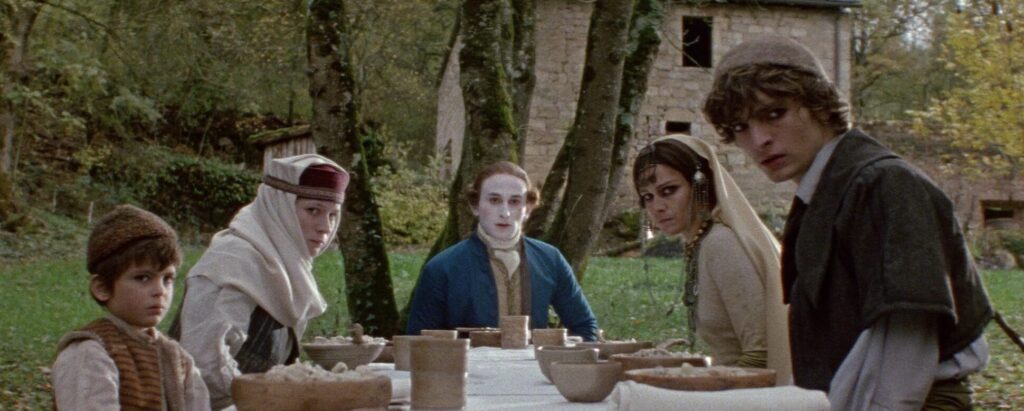“The Vourdalak” Terrifies With a Ferocious 18th-Century Monster

We’re all familiar with Bram Stoker’s Dracula. A tentpole of the modern horror genre, when we think of vampires, it’s often this widow-peaked gentleman that comes to mind. But vampiric folklore has been around since time out of mind and many cultures have their own versions of the blood-sucking beasts. The Slavik vampire is known as the Vourdalak, a hideous creature who feeds on those they love. Coined with Aleksey Konstantinovich Tolstoy’s 1839 story, The Family of the Vourdalak, the creature actually predates Stoker’s classic text. Adrien Beau adapts the novella in The Vourdalak, a terrifying journey into the heart of familial darkness. This frightening creature brings death and destruction to those he loves most and lurks in the shadows of his children’s dreams.
The film begins with a late night knock at the door. A member of the French envoy Marquis Jacques Antoine Saturnin d’Urfé (Kacey Mottet Klein) has lost his horse in the woods and is desperately searching for shelter. Afraid of the night’s dangers, this unnamed neighbor will not open the door, but directs Jacques to the home of a man named Gorcha (voiced by Beau) who can provide some help. The next morning, Jacques encounters Gorcha’s adult children Sdenka (Ariane Labed) and Piotr (Vassili Schneider) in the woods and follows them back to their wealthy home. However, upon arrival Jacques learns that the elderly master of the house is off fighting Turks and fears he will transform into a Vourdalak while away. He’s left strict instructions for his children to deny him reentrance after six days. But eldest child Jegor (Grégoire Colin) ignores these wishes, believing them to be superstitious nonsense. His foolhardy loyalty to the domineering patriarch unleashes a series of devastating deaths as the Vourdalak systematically tears the family apart.
This frightening lore comes to life with a relatively faithful adaptation of Tolstoy’s story. Dressed in the powdered finery of the French court, Jacques visits a Slavic estate deep in the woods. The patriarchal rules of the era are unimpeachable and we’re just as afraid of Sdenka’s limited life as the creature terrorizing her gloomy home. Beau plays with the light and creates disturbing imagery with minimal effects. This Vourdalak lurks in shadows and hunts at night, luring his family into the dismal darkness. Just as terrifying as Dracula, this folktale is perhaps more disturbing because of the way Gorcha targets the ones he loves.
Beau takes an interesting approach to his creature design with practical effects both garish and grisly. When we first meet Gorcha, he’s essentially a skeleton clutching the severed head of an enemy warrior. It’s difficult to believe his family would invite him in. However, this adds to the bizarre nature of the story and a dinner around the family table becomes a surreal nightmares. A shocking act of animal cruelty completes the upsetting scene and cements Gorcha’s status as a heartless monster. The rest of the film unfolds in similar terror. With low-fi effects, the horror feels glaringly present. While not exactly believable or realistic, Beau indulges in the folkloric fun and presents a garish and frightening fairy tale.
There is little about Gorcha that is not monstrous. He openly dislikes his sensitive son and likely orchestrated the murder of his daughter’s fiancé. Sdenka frequently dreams about throwing herself off a nearby cliff and it’s unclear if they would be better off with the human or the monster. While unlikely to achieve the same ubiquity as Dracula, the Vourdalak is an equally harrowing story with a devastating creature that has likely grown more monstrous with age. Beau wrings horror out of this 18th-century setting and places us in a dark house with a vindictive killer. The overall impression we’re left with is the cost of survival and the insidious ways an unfeeling authority figure can literally bleed his family dry.
Jenn Adams is a writer, podcaster, and film critic from Nashville, TN. Find her social media nonsense @jennferatu.